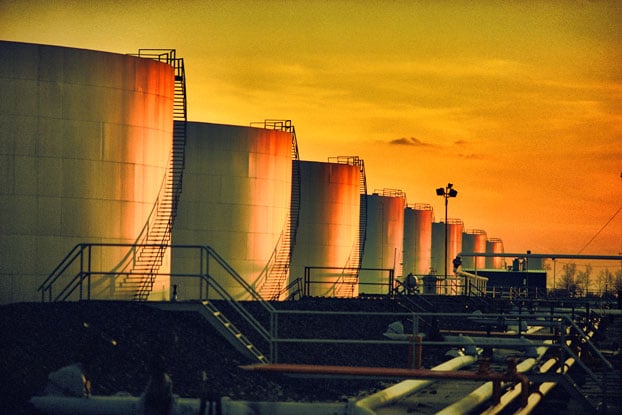This guest blog post was written by S.K. Ravindran, global product marketing manager with Honeywell Process Solutions.
Safe handling and storage of bulk petroleum products has challenged the oil industry for decades. Accidents in petroleum storage terminals and refineries have demonstrated all too clearly how it can go badly wrong. Investigations into the root causes of these accidents have also given us a range of standards and regulations to be followed.

As a result, tank farms, storage areas and loading/unloading sites must combine effective process control and safety solutions to run operations efficiently, ensure compliance and protect personnel, assets and the environment. A practical approach will follow all good engineering practices, taking advantage of the knowledge already gained by the industry regarding process and safety systems.
For process control purposes, petroleum products in storage tanks are monitored and controlled through auto tank gauge (ATG) systems, such as radar type ATG or servo type ATG. This basic process control system (BPCS) also functions as part of the tank farm’s initial layer of protection. As specified in ANSI/API 2350:2012 edition 4, “ATGs are high accuracy continuous level sensors that meet the specifications of API MPMS 3.1B recommendations”. The majority of such instruments perform with an accuracy of better than +/-1 mm (±0.04 inch), and also meet the OIML R85:2008 recommendations.
Data transmitted over wired or wireless networks
In the BPCS, the critical data is transmitted over a wired or wireless network to a distributed control system or programmable logic controller (PLC) system for control purposes. The safety instrumented system (SIS), meanwhile, is the second protection layer, and is formed by primary sensing elements, logic solvers and the final control element.
The importance of the independence and separation of the BPCS and SIS layers is widely noted in recommendations from safety experts and in standards such as ANSI/API Standard 2350:2012, fourth edition. Analysis of previous accidents has established beyond doubt that the SIS and BPCS must be separated physically and electronically, and that each should be independent of the other’s functioning. This greatly reduces the risk of common cause failures and systematic failures that affect the entire system.
For the same reason the common cause failure possibilities of the instruments involved in each system should also be critically reviewed. Using sensors based on diverse technologies reduces the risk of common cause failures affecting both the BPCS and SIS layers of protection. Moreover, there is another important reason to have independent layers of protections separated physically and electronically: the impact of change. While changes to BPCSs are common and necessary to maintain accurate process control, safety control changes are subject to strict adherence to management of change (MOC) programs. This typically necessitates the use of a high integrity device for both the BPCS and for the primary sensing element of the SIS, which should meet the requirements of a HAZOP study.
Choose ATGs with different measurement technologies
With many different measurement technologies available, however, it is possible to choose ATGs with different measurement technologies for BPCS and SIS that, nevertheless, have similar measurement performances, offer self-diagnostic features, and are certified by reputed third-party safety assessors.
One practical, proven solution is to use a radar type continuous electronic sensor ATG for the BPCS with a servo type continuous electronic sensor, for the SIS, or vice-versa. Such a solution meets the main objectives of process control and enhanced safety:
- Comparable and redundant measurements
- Self checking continuous type electronic sensors
- High accuracy and performance to ensure safe operation so that safety function thresholds can be kept sufficiently high to maximize storage capacity.
- Proof testing of ATGs can be logged with automatic event listing for documentation requirements of BPCS and SIS maintenance
- Flexibility to program another alarm in the control system for where the difference in measurement between the ATG technologies exceeds a set value.
Avoid measurement technology shortfalls
This also avoids the shortfalls of other measurement technologies: outdated mechanical float and tape type auto tank gauges have proven unreliable in major accidents in the past; and point level instruments offer limited diagnostic coverage and increase the health and safety risks associated with frequent proof testing on tank tops. Other continuous electronic sensing instruments such as guided wave radars (non ATG) could be an alternative, but require precautions and careful attention to the safety manuals of such instruments.
Ultimately, the choice of instrument will be determined in part by corporate practice, but mostly by the prevailing mandatory guidelines of the relevant regulatory authorities. At the core of these guidelines, however, is a wealth of industry experience and best engineering practices derived from them. Taking advantage of this is the best way to develop a safe, reliable and efficient tank farm operation.
About the Author S.K. Ravindran is global product marketing manager with Honeywell Process Solutions. With over 23 years’ experience in process instrumentation, he has been involved in engineering, project implementation, commissioning, sales account management, and leading the Terminal Automation and Tank Gauging Solution business. In his current role he is responsible for new product launches globally, product performance and growth, and portfolio expansion programs to expand the served market. He graduated in electronic engineering from University of Pune and is a TÜV certified functional safety engineer
S.K. Ravindran is global product marketing manager with Honeywell Process Solutions. With over 23 years’ experience in process instrumentation, he has been involved in engineering, project implementation, commissioning, sales account management, and leading the Terminal Automation and Tank Gauging Solution business. In his current role he is responsible for new product launches globally, product performance and growth, and portfolio expansion programs to expand the served market. He graduated in electronic engineering from University of Pune and is a TÜV certified functional safety engineer



